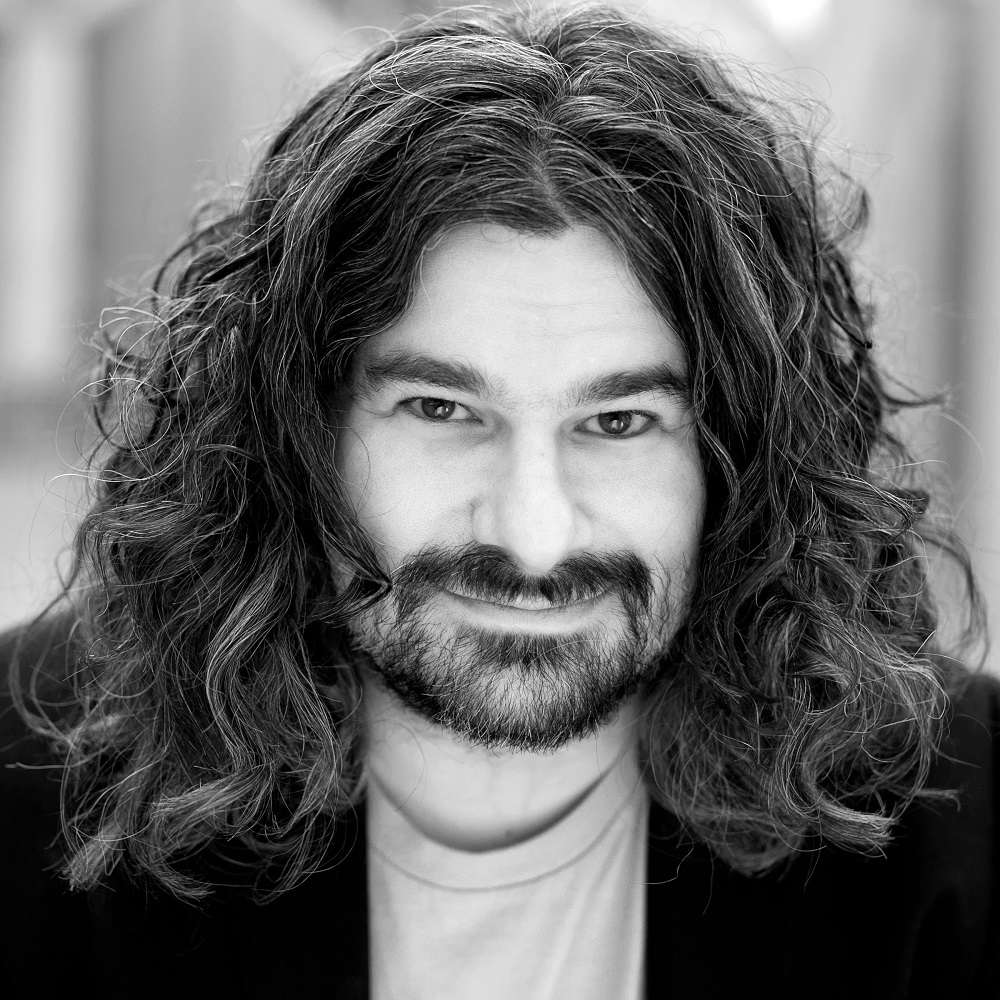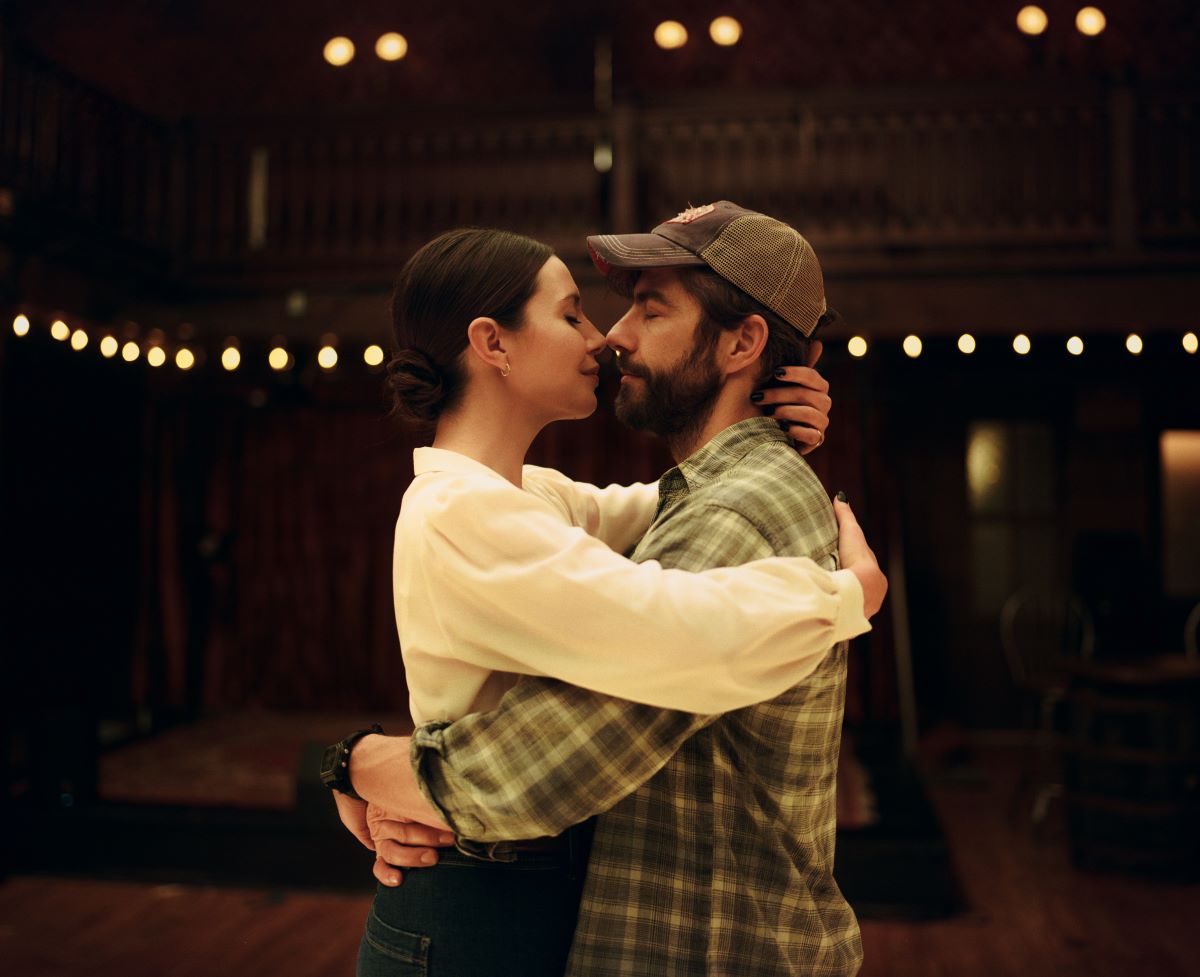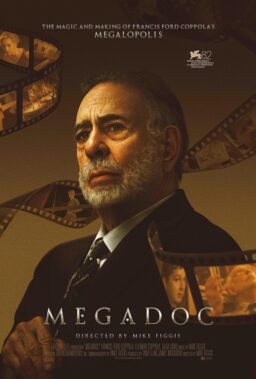It’s wonderful to be back in Cannes. The return mid-COVID restrictions in 2021 held a terrific slate, but the move to July and the lack of any market screenings/events meant that it felt more than a bit diminished. Last year was the first major step back to normal, with so much of the feeling one of celebration of simply being in packed cinemas, with so much of the discussion very much surrounding the sense of cinema being back. 2023 finds most of us on the ground in full fest mode, gorging on films, meals and scheduled events while capably deluding ourselves to forget the lasting effects of the pandemic.
While introducing “The Nature of Love” (“Simple comme Sylvain” in French) at her Un Certain Regard premiere, Québec-born Monia Chokri read a prepared statement in both English and French, with Thierry Frémaux on stage smiling in support, that tackled the nature of “genius” celebrated at events like Cannes. Her general argument is that part of being considered a genius in this medium is to take into consideration levels of kindness, and that one should not simply ignore egregious behaviour when evaluating art. The statement was succinct and eloquent, and while it certainly won’t put an end to a debate as old as time about whether one can separate art from the artist, it was clear that it came from a spirit of wanting to move the conversation forward.
“The Nature of Love” is an immensely charming and warm look at a part-time professor in Montreal (played pitch perfectly by Magalie Lépine-Blondeau) who finds partnership with the bookish Xavier (Francis-William Rhéaume) placidly predictable. When she meets Sylvain (Pierr-Yves Cardinal), a contractor helping make a newly purchased lakeside cottage habitable, she’s drawn with almost chemical insistence to this new man. The notion of wandering eyes is hardly new in cinema, but Chokri and her cast manage to make the proceedings feel fresh and believable. There are cultural collisions between the academic who benefits from a previous partner’s more wealthy family, versus the more brash, brusque, blue-collar Sylvain who manages to upend all her predictability. While the dichotomies are pretty obvious, there’s a subtlety in navigating them, effectively illustrating biases and preconceptions from all sectors, while showing quite profoundly the fine line between the lust-filled draw of the new partnered with the comfort of one’s own personal and emotional silo.
It’s always amusing to watch a Quebecois film in France with added French subtitles, but it illustrates that the idiomatic phrases and especially the contrasting accents are challenging even for speakers on this side of the Atlantic. It’s indicative of how the story plays out in a hyper local way, but doing so while evoking far more universal sentiments, even making overt references to a number of historical great thinkers. For this former philosophy major, I found the callouts to philosophical notions of love expressed by thinkers that range from Plato to bell hooks particularly engaging. In the end, the film is sexy when it needs to be, smart at other times, and even silly as well, making for an excellent blend that feels refreshing given such matters often are dealt with in a far more arch way.

One thing that this year’s festival has been unafraid to do is to program multiple films of truly epic length. I began yesterday spending over four hours thoroughly engaged with Steve McQueen’s “Occupied City”—based on writings of his partner Bianca Stigter—a film that explores the phantoms of past events that haunt the city of Amsterdam. Formally, the film is relatively straightforward—you see a shot of contemporary life in the city while a voiceover intones about historical events that took place at that very spot.
The film uses the very mechanism of tedious repetition to make us almost bored with the litany of death and destruction, where commonplace cruelty during the war was such a regular occurrence that one stopped seeing it as anything other than regular life. Like the bricks that line a newly-built memorial, the stories build up bit by bit, image by image, until the final moments are emotionally overwhelming because of their quiet simplicity. There are times when McQueen uses quite startling matches of contemporary events mirrored by the past, but I think it’s too simple to simply suggest a correlation between what was and what is. If anything, seeing mass protest against COVID restrictions or environmental causes illustrates just how relatively mute was the response from locals during the War, save for a brave and well celebrated few, and making clear just how willing a huge percentage of the Dutch population was to join in Hitler’s dark crusade.
The National Socialists worked very hard to be as truly despicable as they were, and hyperbolic rhetoric that uses terms like “Nazi” or “Fascist” for rhetorical impact is reductive at best, diminishing the scope of past horrors at worst. A charitable reading of McQueen’s work, and I believe more accurate, would point out how it shows thousands able to protest who claim to be silent, contemporaries bemoaning a loss of freedom when the ultimate betrayal of freedom took place on those very locations not so long ago, or strident truth-deniers decrying the advice of medical professionals based on the same insidious practice of half-truths and epistemically suspect conclusions that proffered such assumptions as being able to tell a Jew apart by their bare legs as they walked or the way a certain baby’s ears are shaped. I choose strongly to read these moments not as somehow conflating the restrictions by the Nazis with the fact-based calls for lockdown measures, but quite literally the opposite: Making fools of those that would make such dangerously hyperbolic claims (many of whom are in leadership positions around the world) by addressing overtly what true tyranny looks like.

This way of assembling images that disturb in order to provoke examination is also the subject of Wim Wenders’ remarkable new documentary “Anselm,” which screened immediately following McQueen’s film. A sister film of sorts to 2011’s celebrated “Pina,” this latest film provides a fascinating, and at times breathtaking, look at German artist Anselm Kiefer.
My knowledge of art is woefully negligent, and I admit total ignorance when it comes to this iconoclastic painter, sculptor, woodcutter and bookmaker. From the opening shots we are treated to surreal images of costuming, as white, wedding dress-like gowns are scattered in a sunny wood, each with various forms of distress added to them. There’s barbed wire and grass, large metal hoops crowning like a robotic head, and large shards of glass that cut into the material in viscerally impactful ways. We see Kiefer riding his bike in a hanger-like atelier, actual full-sized aircraft parts the constituent pieces of several of his installations. The canvases themselves are jaw-dropping, multi-story sized affairs requiring scissor lifts to navigate. It’s downright bonkers to see how these paintings and sculptures come together, and we get not only a sense of the immense scale but also the intricacies and textures of these monumental works.
As the film unfolds, we’re treated to recreations of several moments of Kiefer’s life, the youngest played by Wenders’ son, the middle-aged version played by Kiefer’s own progeny. It should all feel a bit trite, but somehow the mix of tones perfectly reflects the mixed media of Kiefer’s own work. Wenders manages to surpass “Pina” with this even more remarkable portrait of an artist as a young, middle-aged and older man, using the very tools of Kiefer’s art to extend our understanding of how they’re made and to allow us who haven’t had the privilege to experience the compound-like art studio complex in cinematically rewarding ways.

And finally, another film unapologetically long, especially in the puerile sense, was the newly minted “Ultimate Cut” of “Caligula.” The original release in 1979 was the stuff of legend, and the title card reminds of comments like “moral holocaust” levied against it, and where screenwriter, director, and even composer sued to have their names taken off release. Thomas Negovan has gone back to the original camera negatives and managed to craft what is claimed to be a closer version of Gore Vidal’s original script, eschewing the additional hardcore pornography that the film’s producer Bob Guccione, he of Penthouse Magazine fame, added back then to try and generate some income from the debacle.
The cast includes legends such as Malcolm McDowell, Peter O’Toole, John Gielgud, and, in one of her earliest roles, a brash and buxom Helen Mirren, who was supposed to attend the premiere but canceled, leaving the packed crowd at the Buñuel theatre only sated with her on-screen charms and seductive dance moves. This was my first screening of any iteration, and while it remains a maudlin, horny, gratuitous mess, I couldn’t be happier I had a chance to experience it. McDowell’s manic take ups the ante from his Alex character in “A Clockwork Orange,” while O’Toole’s sheer lunacy makes Nicolas Cage’s bouts of scene-chewing look positively passive.
In his original review, Roger Ebert held little back. He found it “sickening, utterly worthless, shameful trash,” and “If it is not the worst film I have ever seen, that makes it all the more shameful: People with talent allowed themselves to participate in this travesty.” He even admitted to walking out two hours into what was then a 170-minute film. I’m positively evangelical that one needs to finish the film before writing a word, no matter how egregious the experience. Still, I do understand the rhetorical benefit that added for his vintage take. Having not seen the version that Ebert described as being “not good art … not good cinema, and … not good porn,” I have to admit that I’ve seen far more egregious examples of cinema than this almost charmingly carnal version. That’s not to say that this is a good film, by any means, but it’s at least pretty good thanks to the decades that have transpired and the new restoration.
The film’s picture and sound restoration is quite remarkable, so kudos to those that treated the negatives and original materials with respect and managed to recreate missing soundscapes in seamless ways. The visual splendor of the massive sets with their gaudy colors are only surpassed by the risqué-yet-ill-fitting costumes festooned with baubles and ribbons aplenty. Add in a newly minted title sequence with a “Little Boots” dance tease, and you’d be forgiven to think that this is finally the movie they always wanted to make.
It seems, however, that the rise from the dead of “Caligula” has more hurdles to jump, as the original director is suing Penthouse Productions to stop its subsequent release after the one screening at this festival. This may not be on the level of the famous “Kill Bill” secret screening at Cannes for a one-and-done marker. But if I was witness to the only time this uncircumcised version of “Caligula” is played to an audience, half of whom stayed until the sordid, silly end, then that is perhaps a victory worth celebrating by mimicking McDowell’s second most disturbing dance sequence.












